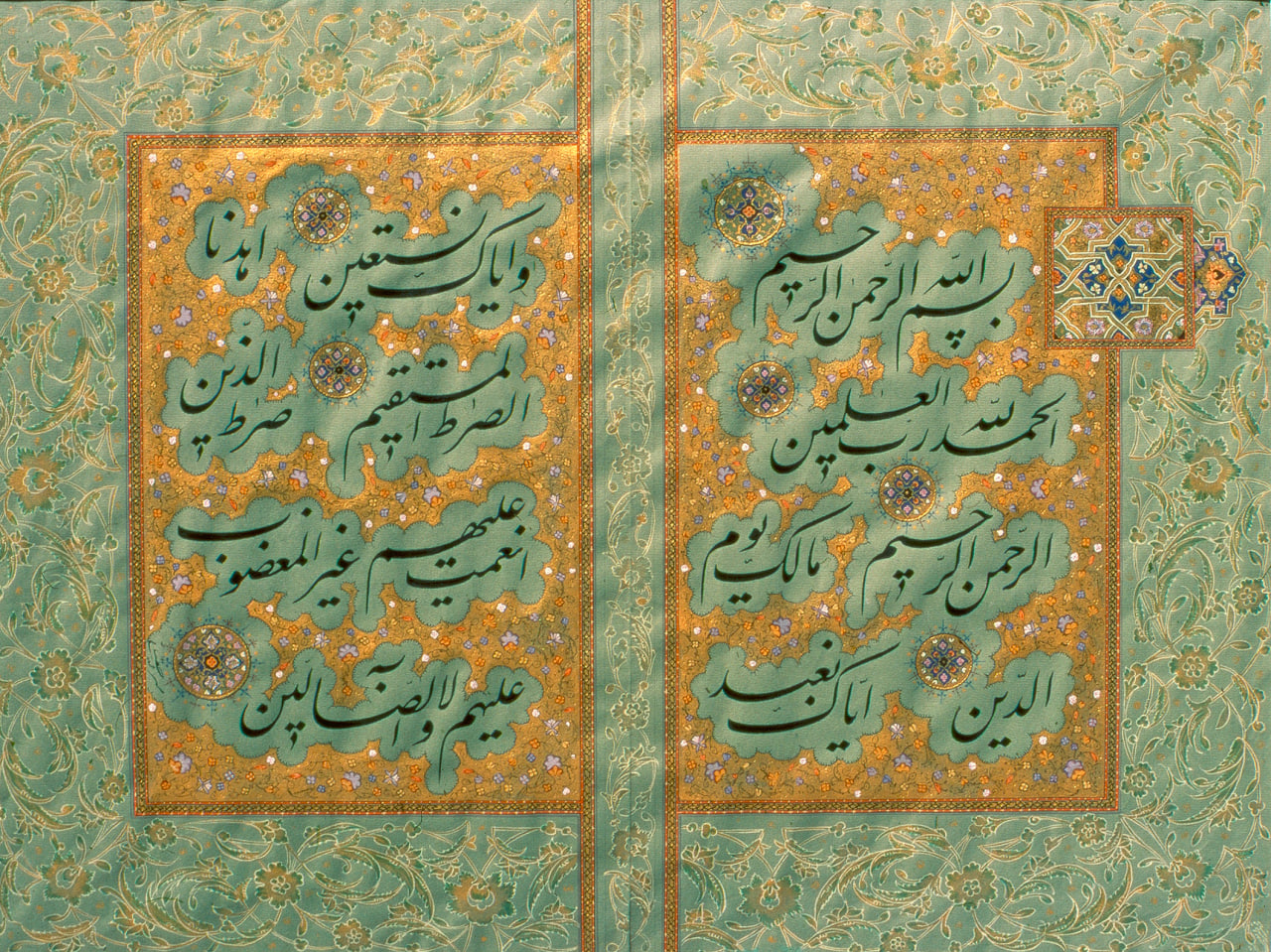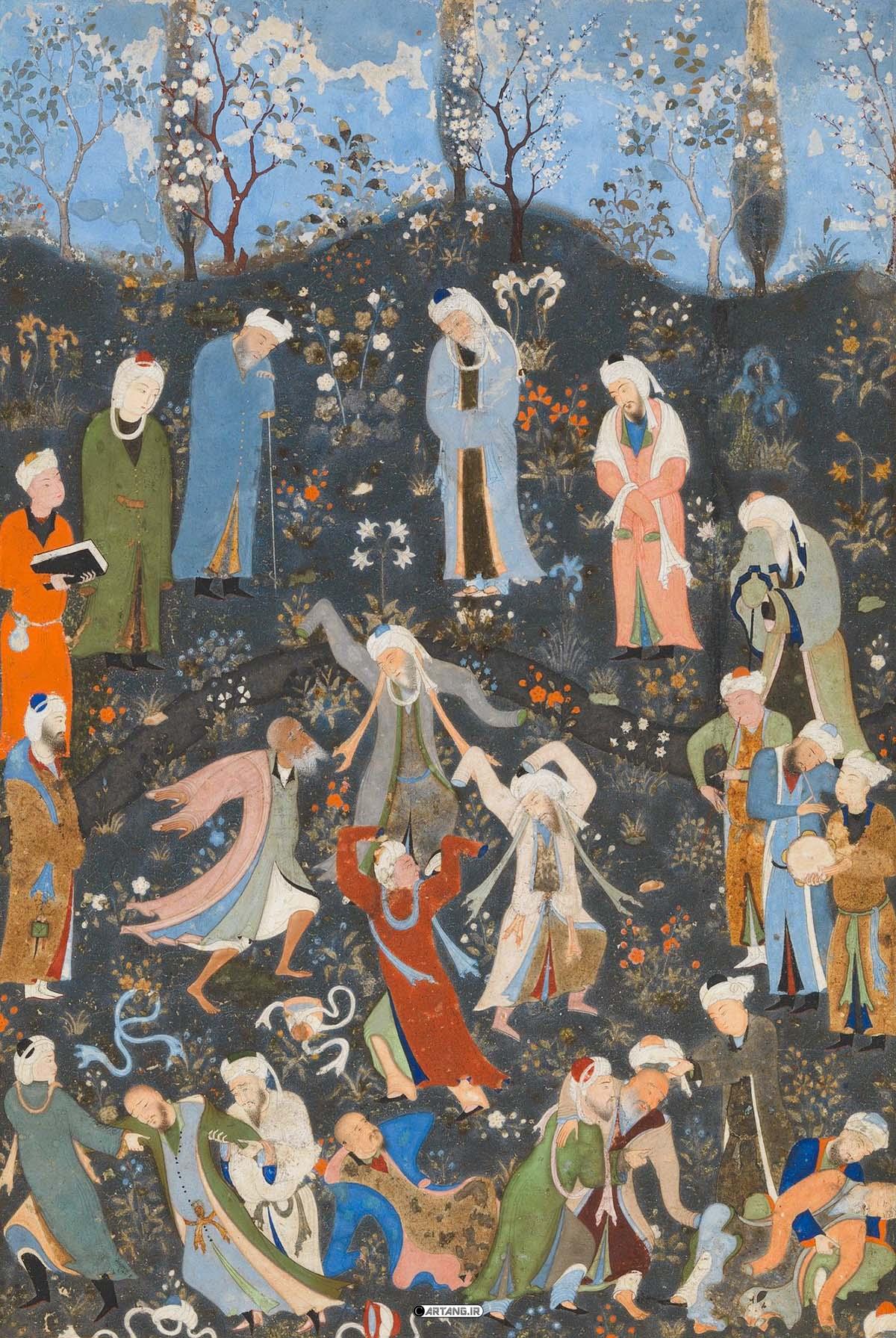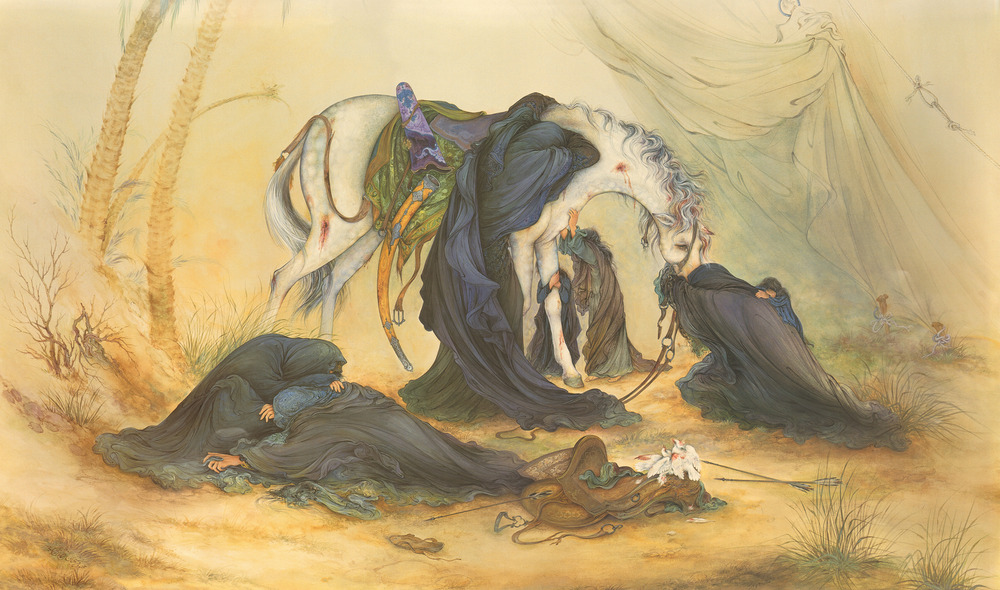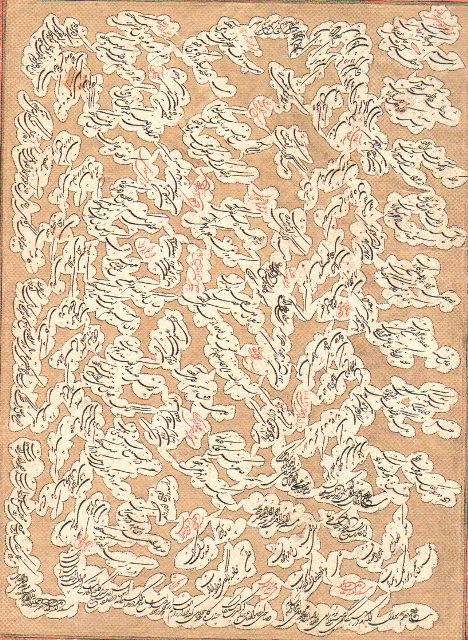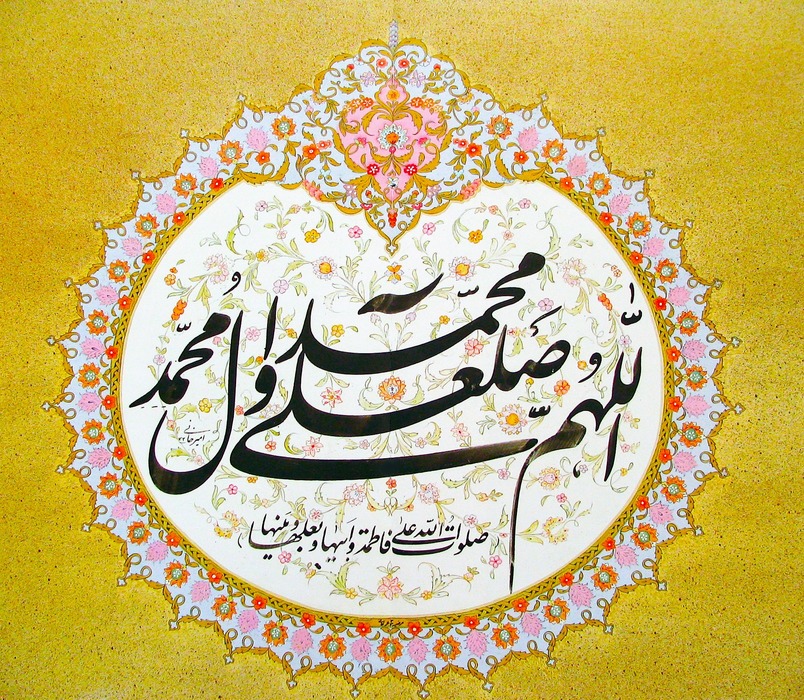
Gholamhossein Amirkhani: The Father of Contemporary Iranian Calligraphy
Gholamhossein Amirkhani: The Father of Contemporary Iranian Calligraphy
Gholamhossein Amirkhani was born on January 23, 1940, in the village of Shahrasar in Taleqan. When he was three or four, he became familiar with letters and numbers and acquired the skill of writing. At the age of five, he moved to Tehran with his family. During their short stay in Tehran, Gholamhossein’s father worked in a sock-hosiery factory, but shortly after, the family returned to Taleqan, where he took up a teaching position in the village of Shahrasar. Due to the nature of his father’s profession, Gholamhossein and his family returned to Tehran a year later. Having completed first grade in Shahrasar, Gholamhossein attended Masoud Saad Elementary School in Tehran for his second year. When he reached adulthood , he began working as an accountant in a trading company, and it was there that he started practicing calligraphy on packages. The master himself recalls: “While working, I discovered that I felt an uncontrollable passion and enthusiasm for writing on the packages. I wasn’t even thinking about what I was writing — it was the act of writing itself that filled me with ecstasy and swept me away.” He has also stated in an interview that during those days, due to the lack of proper tools and materials for calligraphy practice, he used to rehearse his writing on mud-plastered walls or on polished tin and metal sheets. At the age of nineteen, his deep passion for calligraphy led him to the Iranian Calligraphers Association, where he gradually became acquainted with the fundamentals of this art.In 1961 (1340 SH), he began working in the Graphic Arts Department of the then Ministry of Culture and Arts, where he gained valuable experience under the guidance of the distinguished master Sadegh Barirani. During this period, the young Amirkhani also benefited from the mentorship of other renowned figures, such as Dr. Manouchehr Adameet, through which he built a reputation for himself in the world of culture and art.
Artistic Style
In 1961, he received the Certificate of Excellence from the Iranian Calligraphers Association, gaining the attention of figures in the cultural and artistic community. Amirkhani’s acquaintance with Dr. Estakhri, one of the prominent intellectuals of his time, brought a significant transformation to the spirit and character of this calligrapher. Their friendship and close association continued until 1981, the year of Dr. Estakhri’s passing, resulting in the transcription of approximately 5,000 pages under the title“Talʿat-e Haqq” (The Countenance of Truth), of which 2,500 pages were published in six volumes. In 1966, Master Amirkhani became a member of the Board of Trustees of the Iranian Calligraphers Association, and in 1974, he attained the rank equivalent to Master. During this period, he collaborated with prominent calligraphers such as Fathali Vashaqani, Reza Mafi, Kheykhosro Khoroush, Oveis Vafsi, Ali Akbar Khan Kaveh, Seyyed Hossein and Seyyed Hassan Mirkhani, and Ebrahim Bouzari. In 1978, Master Amirkhani was appointed President of the Iranian Calligraphers Association, a role he held until 2023. The following year, in 1998, he received the First-Class Medal of Culture and Art from the President of the Islamic Republic of Iran. In 2002, he was honored as one of the distinguished figures in the “Everlasting Faces” ceremony. He currently serves as the head of the Supreme Council of the Iranian Calligraphers Association.
Master Amirkhani’s Artistic Style
Master Amirkhani’s style is a highly resonant approach that has consistently been popular among calligraphers over recent decades. The primary expertise of this calligrapher lies in the Nastaʿlīq script, although he is also proficient in other styles, such as Shekasteh-Nastaʿlīq. In his early youth, Master Amirkhani did not follow a specific calligraphy model; therefore, he acted according to his own disposition, and his style emerged as a combination and fusion of various calligraphic approaches. Even when he studied under Master Seyyed Hossein Mirkhani, he received this advice from his teacher: “Young man! Don’t write like me; the way you write now is good.” Master Amirkhani, with full mastery of various pen proportions, writes pages and inscriptions with exceptional skill. This prominent contemporary artist should be regarded as a reviver of calligraphy in the modern era. He is a calligrapher who managed, after many years, to restore artistic calligraphy alongside functional writing. His script has always conveyed meaning and has continually evolved along the path of change and refinement. In his calligraphy, Amirkhani presents a delicate and artistic fusion of the styles of both classical and modern calligraphers, which is not only beautiful but also pleasing to the eye. The rises and falls of his script are based on the well-known golden proportions, as if he had tailored a new form for the Nastaʿlīq script. In Amirkhani’s works, one can observe traces of the firmness of Mir Ali Heravi and Soltan Ali Mashhadi’s script, the delicacy of Mirza Gholamreza Esfahani, and the boldness of Mir Emad Qazvini. Master Amirkhani has experimented with various forms of calligraphy and has achieved remarkable success in most of them. In Chalipā writing, a classic and visually striking form of calligraphy, he has produced successful and sometimes innovative works, some of which rival the best historical examples. The numerous Chalipās he has created on starch-sized Safavid and Qajar papers are considered among his most brilliant works. In the field of Gheteh (piece-writing), Master Amirkhani, relying on the rich legacy of great historical calligraphers and using innovative personal combinations known as “Qesar-navisi,” arranges phrases beautifully and harmoniously within a confined space. His piece-writing, employing various pens and the skillful placement of fine and bold elements while maintaining unity, is an unprecedented and innovative achievement. On the other hand, poster calligraphy, which is an important need in contemporary calligraphy, should also be considered among Master Amirkhani’s innovations. Additionally, cover calligraphy with novel combinations, previously without precedent, has been transformed into a unique style by this artist. Although there are good examples of his Siah-Mashqworks over the years—such as those printed in the book Sahifeh-ye Hasti—he has never seriously pursued this form. Perhaps the reason for this is the school in which the master was trained, namely, the Mirza Reza Kalhor school. In this school,Siah-Mashq is not considered a prestigious or primary form; it is mainly regarded as a practice or recreational exercise. In the field of manuscript writing, although its original functional role in the emergence of calligraphy no longer exists and it mainly addresses artistic and aesthetic aspects, Master Amirkhani is considered one of the most prominent contemporary scribes, with a fresh perspective on line and page composition. One of Master Amirkhani’s striking examples of manuscript writing is the introduction to the book Monaajat-e Manzoom of Imam Ali (peace be upon him), written in the script of the late Mir Ali Heravi. Amirkhani also has great skill in selecting themes, or in other words, in composing appropriate texts, and his exemplars and pieces are full of moral and instructive points. If the scope of a contemporary calligrapher’s activities is divided into four areas—“piece-writing,” “manuscript writing,” “research and study,” and “teaching”—it can be said that Master Amirkhani has achieved remarkable success in most of these four areas.
Master Amirkhani and Calligraphy Education
Throughout his long and influential artistic career, Amirkhani has been able to pass on his valuable experiences to multiple generations of calligraphy students. In this regard, the culture of selfless dedication in calligraphy education, initiated by Master Seyyed Hossein Mirkhani, has been institutionalized by Master Amirkhani. Master Amirkhani’s elite classes at the Iranian Calligraphers Association have always accommodated between one hundred and one hundred fifty eager students. These classes, before being mere places to teach calligraphy, have been centers for imparting knowledge and ethics; the master has always patiently and generously corrected his students’ exercises and discussed them with great detail. This is in contrast to earlier generations of Iranian calligraphers, who did not devote sufficient attention to teaching. It can be said that Master Amirkhani’s efforts in training outstanding students—both in terms of quantity and quality—are comparable only to those of Master Seyyed Hossein Mirkhani. He has had the fortune of training well-known calligraphers such as Ali Ashraf Sandoughabadi, Javad Bakhtiari, Ali Shirazi, Amir Ahmad Falsafi, Mohammad Ali Sabzehkar, Mohammad Ali Ghorbani, and others; it can even be said that the dedication and hard work of this group of students have successfully continued Master Amirkhani’s calligraphic style. In addition to holding in-person classes, which over the past decades have had a significant impact on the teaching and popularization of calligraphy, he has authored several script manuals in various languages, many of which have been reprinted multiple times. Master Amirkhani has held dozens of solo and group exhibitions both inside and outside Iran, in countries such as England, France, Pakistan, Syria, and others. In conclusion, many art scholars consider Master Amirkhani to be the most outstanding living Iranian Nastaʿlīq calligrapher of the contemporary period, and his name has been registered as a living human treasure of Nastaʿlīq in the National List of Rare Intangible Cultural Heritage.
The Artistic Works of Gholamhossein Amirkhani
Among the artistic works of this prominent contemporary calligrapher are: Monaajatnameh of Imam Ali (peace be upon him),Du‘a Kumayl,Divan of Hafez ,Qasideh-ye Qur’aniyeh,Aftabi dar Sayeh (Sunlight in the Shade),Tala‘at-e Haq (The Face of Truth),Tarji‘band-e Hatef ,Sarv-e Sayehfekan (The Shadow-Casting Cypress),Jelveh-haye Niyaz Monaajat (Manifestations of Prayerful Need), several pages from the Holy Qur’an,Spring in Autumn,Tarkibband-e Mohtasham,Rubaiyat of Khayyam,Amirkhani’s Calligraphy Scripts,Sahifeh-ye Hasti (The Book of Existence),Qalam-andazhaye Asheghaneh (Romantic Pen Strokes),The Story of Iyaz’s Love,Message of Kindness,Mashq-e Nam-e Leyli, and more.
| Name | Gholamhossein Amirkhani: The Father of Contemporary Iranian Calligraphy |
| Country | Iran |
| Type | Calligraphy |
| awards | International |
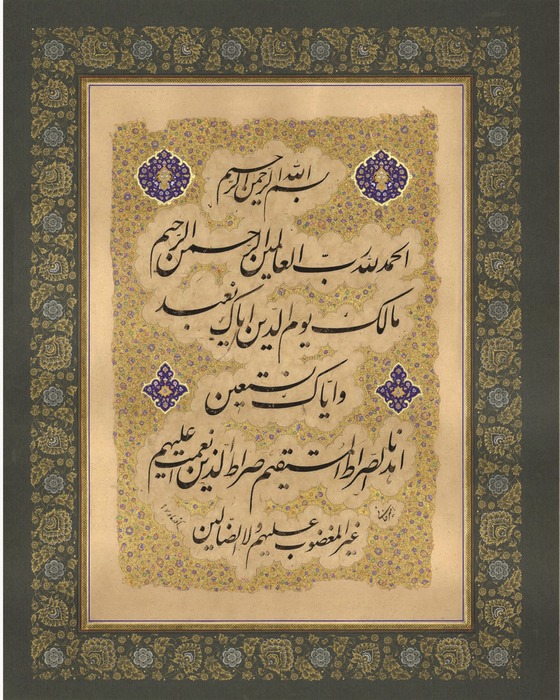
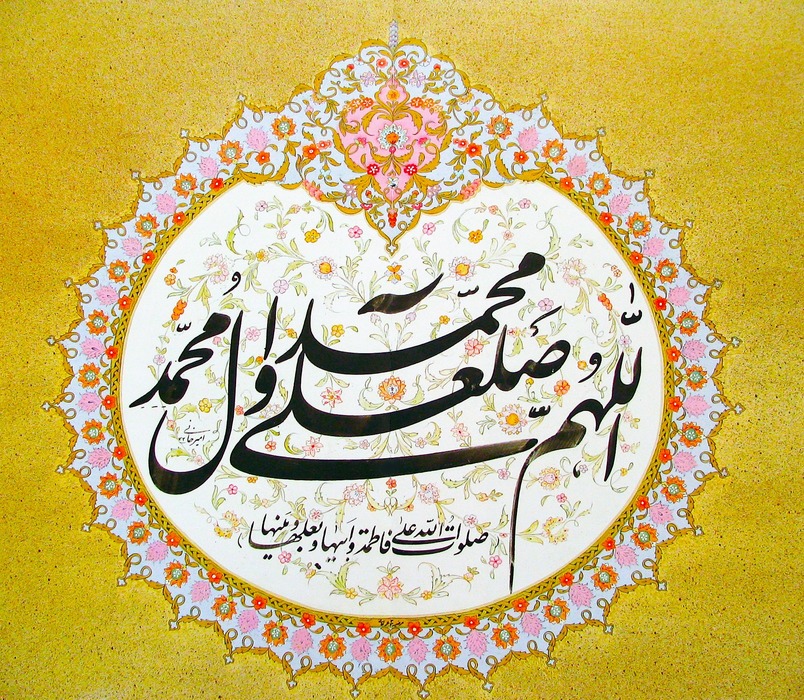
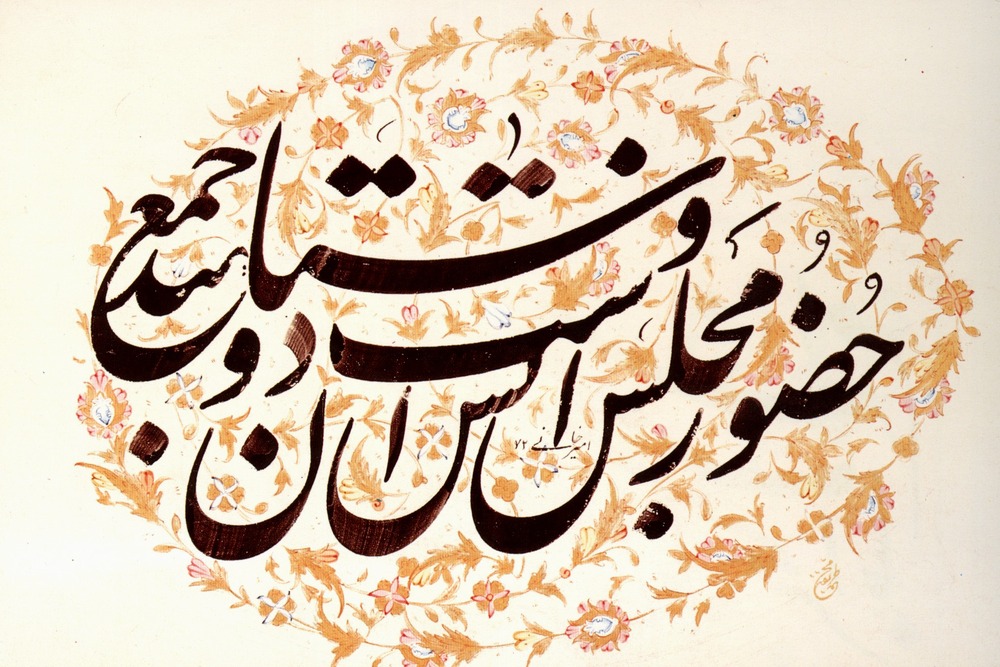
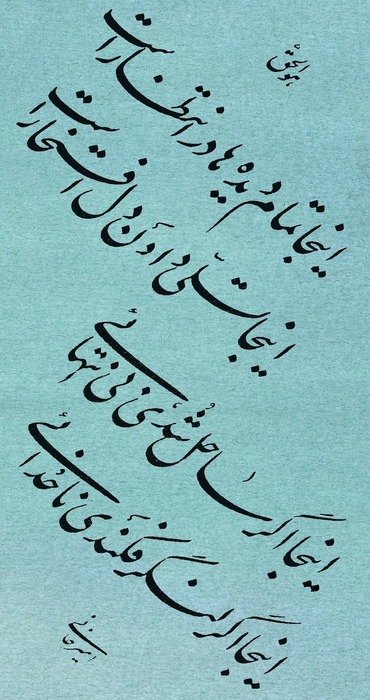




Choose blindless
Red blindless Green blindless Blue blindless Red hard to see Green hard to see Blue hard to see Monochrome Special MonochromeFont size change:
Change word spacing:
Change line height:
Change mouse type:
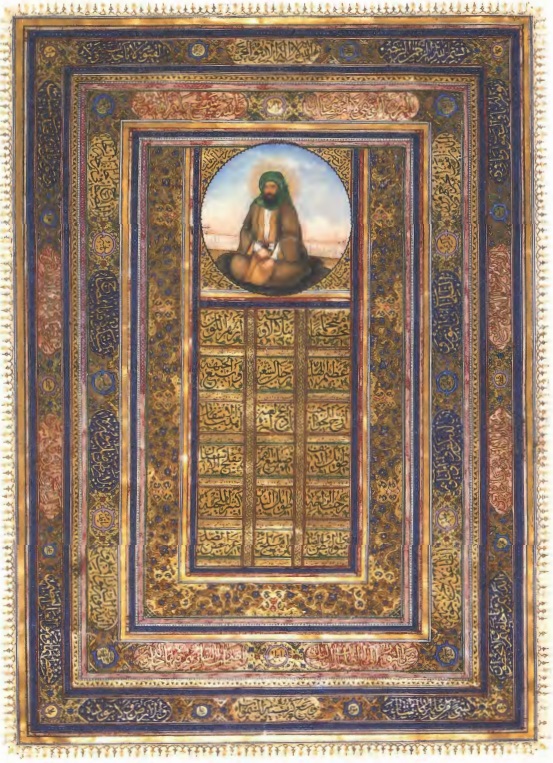
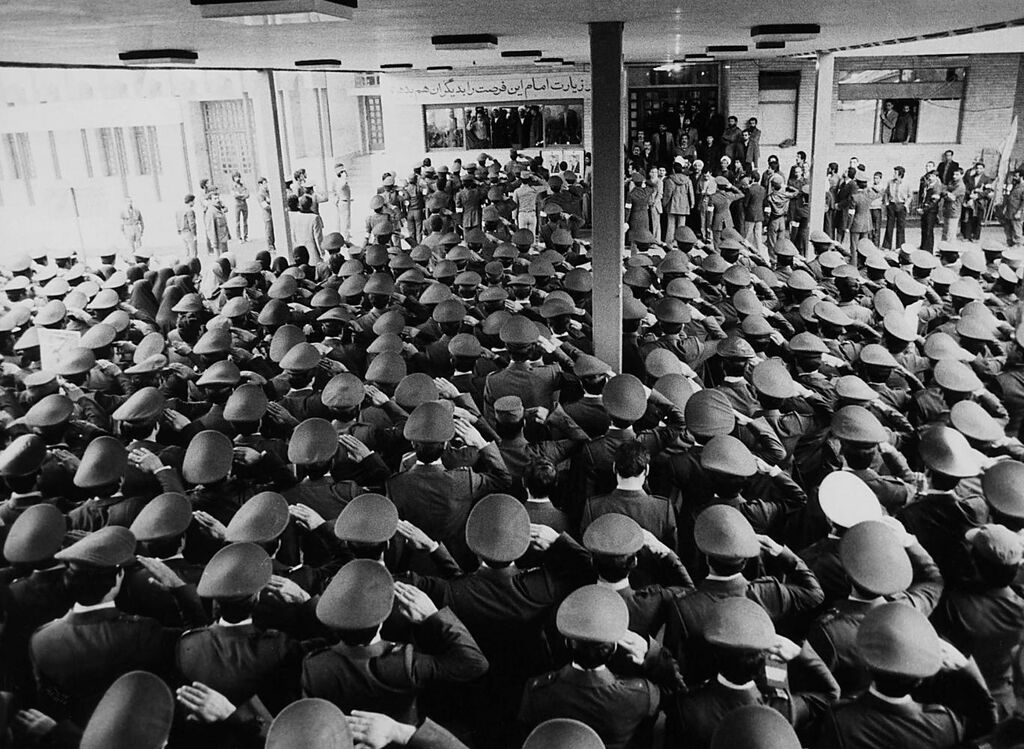

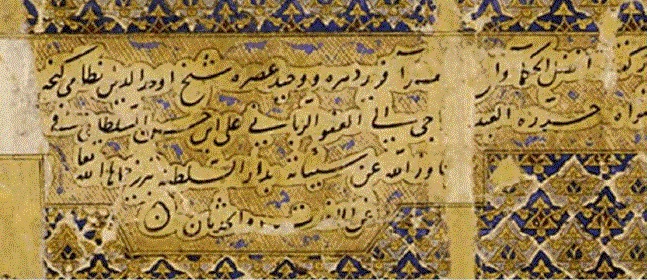
(7)_1_1.jpg)
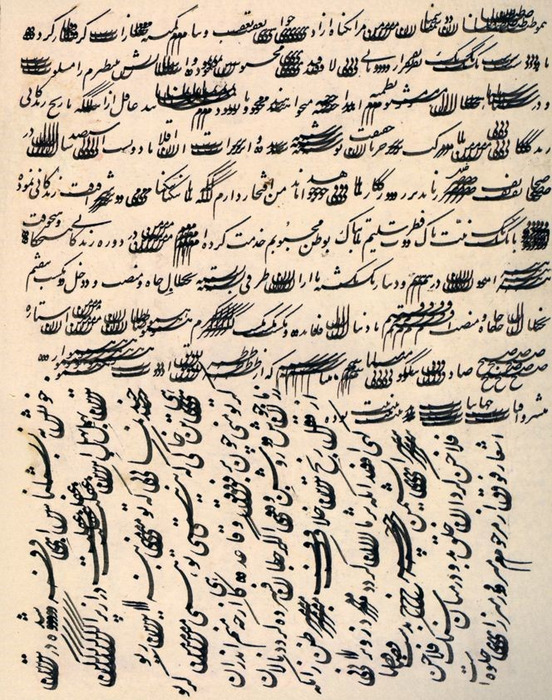
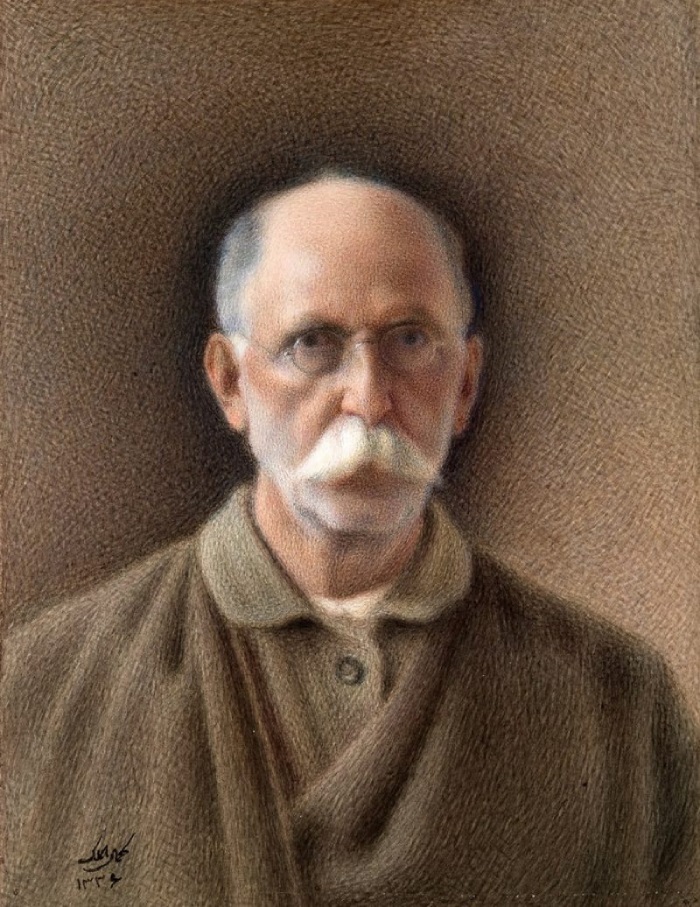
.jpg)
